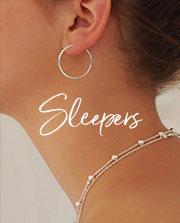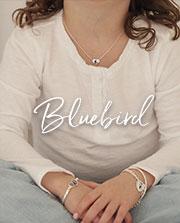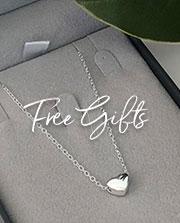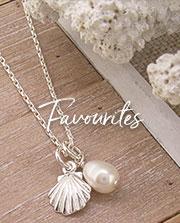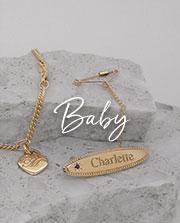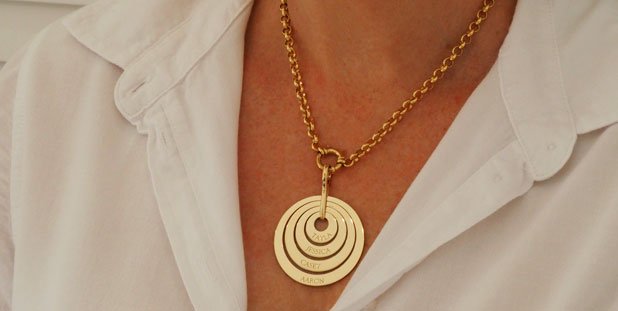While made from precious metals like solid gold and sterling silver all metals are malleable and while professionally made and soldered strong all jewellery and especially fine and delicate jewellery will break if pulled or pushed during activities, more so while doing vigorous activities.
Failure to adhere to the Care Instructions which are included with every order will void your warranty.
If you believe your item has a manufacturing defect or fault, please use the Contact Us and we will be in touch with instructions on how to proceed further.

Taking Care of Your Sterling Silver Jewellery
Sterling silver can tarnish. Over time sterling silver will develop what is called oxidation, which is a result where by heavy tarnish builds up in the fine details of the sterling silver piece
This is due to a reaction of the metal with sulphur containing oxygen particles in the air or because the item has been in contact with chlorine.
Also note that taking certain medications can cause changes in skin acidity and may cause sterling silver jewellery to tarnish.
Tarnish on sterling silver starts out as a yellowish/orange tinge and is most easily removed at this stage.
Silver tarnish progresses to a blackish purple coating, known as oxidisation, becoming much more difficult to remove.
The best way to prevent your sterling silver jewellery from tarnishing is to wear it as much as possible.
The gentle friction from wearing and the contact of natural oils on the skin will likely keep your jewellery bright and sparkling.
In the event that your sterling silver does tarnish slightly it is easily returned to its sparkling former glory by cleaning and polishing from your jeweller or at home with a silver polishing cloth.
Heavy tarnishing will require cleaning and polishing from your jeweller.
Prolonged, unprotected storage is generally when tarnish occurs.
To prevent sterling silver jewellery from tarnishing whilst being stored, store in separate zipped or sealed bags in a cool, dry place, like a jewellery box away from direct light.
Never store jewellery in paper, cardboard or cotton filled boxes, as these contain traces of sulphur, which may cause tarnishing.
Always take your sterling silver jewellery off before applying moisturisers and other skin creams, sun screen, dyes, hairsprays and perfumes.
Avoid all jewellery coming into contact with abrasive soaps, chemicals, detergents, bleaches, ammonia or alcohols as these chemicals will cause discolouration and damage.
Silver is a relatively soft metal and can scratch so don’t scrub with abrasive cloths or cleansers.
Sterling silver jewellery should always be removed prior to washing, bathing, doing dishes, household chores, strenuous activities, exercise, sport, swimming (both ocean saltwater or chlorinated pools), to prevent scratching, denting or loss of gemstones.
Remove all jewellery before going to bed to avoid kinking or breakage.
Contact with perfume, hairspray, chlorinated or salt water or household cleaning products should always be avoided.
Taking Care of your Euroball Earrings
Your new Euroball earrings have been lovingly handmade using tempered solid 9ct gold, rose gold or sterling silver handcrafted earring wires.
Please take care by NOT over extending, bending or twisting your earring hooks while putting them in and out. Over extending and bending will eventually harden the earring wires so much that they will break.
To clean your earrings gently wash them in a mild non -fragrant warm water wash. While polishing them make sure the earring wires are closed to avoid accidental bending.
Care and Storage of Gold Jewellery
Like all jewellery, gold should be periodically cleaned and checked for wear and breakages.
You can clean it yourself with warm, soapy water but your JAA jeweller can repolish it and add that extra sparkle.
Cream and dip liquid polishes will most likely remove oxidation from your jewellery.
They will also most certainly remove any decorative oxidation designs and patinas as well.
It is best to keep these items free of dirt and grim through proper storage and the use of cleaning cloths.
Gold should be stored in a cool, dry place.
Fine jewellery should be stored in separate compartments in a jewellery box or soft pouch.
Never store gold jewellery in paper, cardboard or cotton filled boxes. For best result, place the items in a sealed airtight plastic bag or sulphur free tissue paper prior to boxing and wrapping.
Always take your gold jewellery off before applying moisturisers and other skin creams, sun screen, dyes, hairsprays and perfumes.
Avoid the jewellery coming into contact with abrasive soaps, chemicals, detergents, bleaches, ammonia or alcohols as these chemicals will cause discolouration and damage.
Gold jewellery should always be removed prior to washing, bathing, doing dishes, household chores, strenuous activities, exercise, sport, swimming (both ocean saltwater or chlorinated pools), to prevent scratching, denting or loss of gemstones.
Remove all jewellery before going to bed to avoid kinking or breakage.
"I can't wear gold it leaves a black mark"
They call it 'the mystery of the gold smudge'.
Under normal conditions gold won't tarnish or corrode but there are generations of stories about 'not being able to wear gold'.
Research into the 'gold smudge' has revealed five basic reasons why gold can sometimes leave a black mark or a rash.
1.Sometimes skin secretion and perspiration contain chemicals which react with the molecules of other metals in the gold alloy. This can happen when changes occur in body chemistry, for example pregnancy.
2.Outside chemical influences, such as cosmetics, hairsprays and perfumes may sometimes be to blame for the 'smudge' - always allow these products to dry before putting on your jewellery.
3.Air pollutants from industry may cause the 'smudge' which can rub off onto the skin when jewellery is worn.
4.Minute particles of dust or powder may be embedded in the skin which can result in extremely small particles of gold alloy being rubbed off and left on the skin.
5.The fifth and least likely cause may be an allergy to gold or one of the other metals in the alloy, such as an allergy to nickel which is commonly used in fashion jewellery and in some white golds.
Oxidation
Gold jewellery can be purchased with an oxidised, antique look.
The best way to preserve and encourage the ëantiqueí look of gold jewellery is to not clean the jewellery and by not wearing jewellery in the shower or bath.


